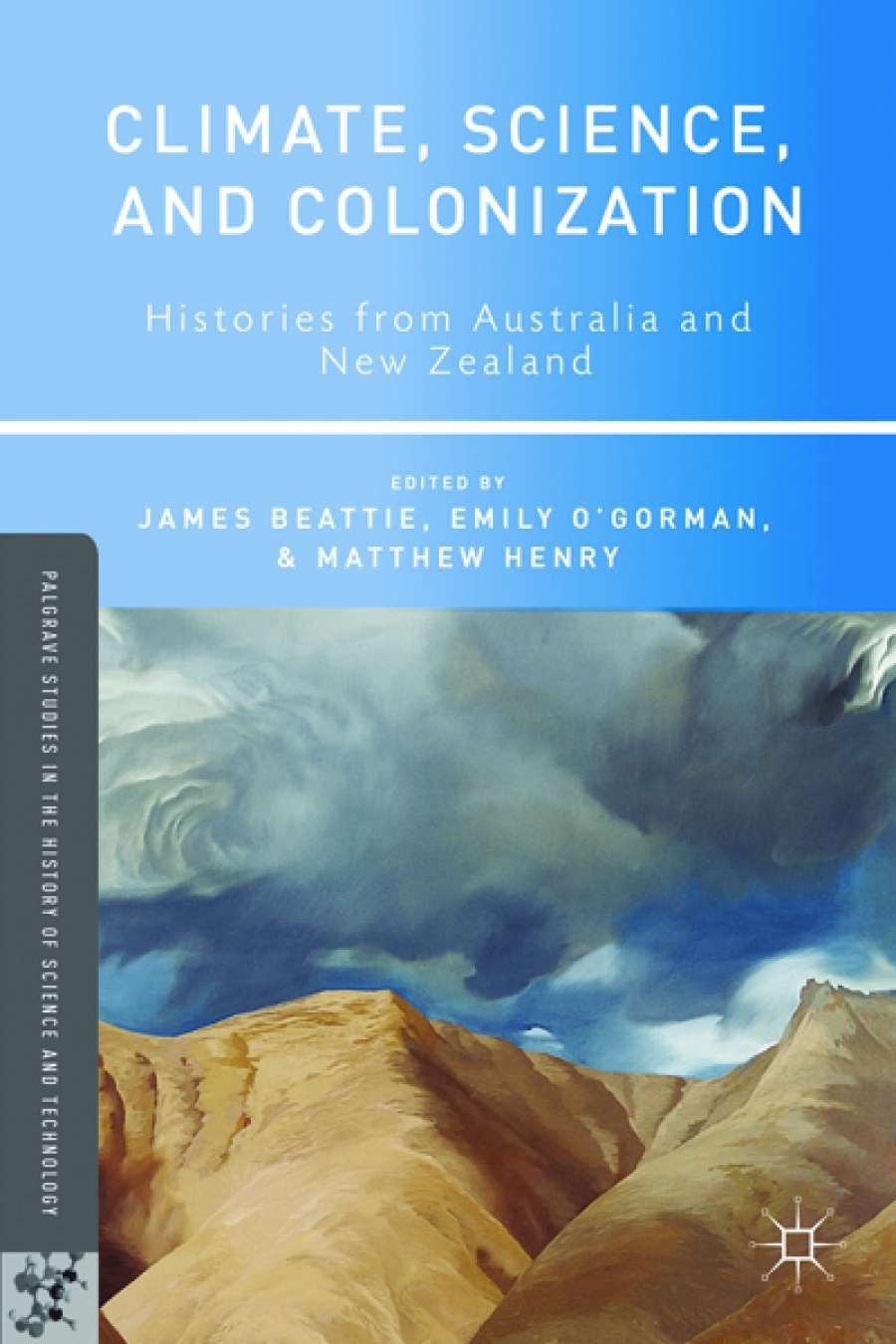
- Free Article: No
- Contents Category: Environmental Studies
- Custom Article Title: Rebecca Jones reviews 'Climate, Science, and Colonization' edited by James Beattie, Emily O'Gorman, and Matthew Henry
- Book 1 Title: Climate, Science, and Colonization
- Book 1 Subtitle: Histories from Australia and New Zealand
- Book 1 Biblio: Palgrave Macmillan, $174 hb, 302 pp, 9781137333926
The thread which binds the chapters of Climate, Science, and Colonization is that climate is a human event; climate is cultural, social, and political as well as natural. The book explores the many ways in which humans have perceived and responded to the diverse climates of Australasia and the way climate has, in turn, influenced people and societies. As the editors explain in the introduction, these chapters present ‘stories about stories about’ climate.
An informative introduction written by the three editors outlines the aims, themes, and approaches of the work and draws together the elements of climate, culture, colonisation, and environment as they appear in the following chapters. The many questions which this book raises – and attempts to answer – include: how has climate shaped the colonial history of Australia and New Zealand? How have we understood weather? How have climates been experienced, understood, and narrated within the colonial context? How has the circulation of knowledge within and beyond political boundaries influenced the differing experience of climate? As the subtitle suggests, this is a history, the focus being the colonial and immediate post-colonial era from the late eighteenth to the mid-twentieth century.
‘How have climates been experienced, understood, and narrated within the colonial context?’
The strength and the weakness of an edited volume is always the lack of a single narrative. In Climate, Science, and Colonization this is an asset; what the volume inevitably lacks in coherence of message it gains in plurality of voices. The fifteen contributors write from the disciplines of history, history of science, geography, paleoceanography, climate science, indigenous studies, and environmental management. This list demonstrates the many lenses through which climate can be viewed. The chapters cover a wide geographic spread, with some authors focusing on particular regions while others draw on a broad geographic scale. Subjects range across extreme weather and El Niño Southern Oscillation (ENSO) in New Zealand and Australia in the 1890s (Don Garden), rain-making experiments in North Otago in the early twentieth century (James Beattie), imported understandings of weather in Northern Australia in the nineteenth century (Chris O’Brien), dealing with agriculture and climate variability in Western Australia from the 1880s to the 1980s (Ruth A. Morgan), the astronomer and meteorologist H.C. Russell (Emily O’Gorman), and a comparison of settlement in the marginal lands of South Australia and the United States mid-west (Kirsty Douglas), to outline only six of the twelve chapters. The diversity of topics makes for interesting comparisons, and helpful in-text notes assist the reader to dip laterally between chapters. While some of the prose sits more lightly on the page than the rest, all the contributors are authoritative and will appeal to a general audience.
‘what the volume inevitably lacks in coherence of message it gains in plurality of voices’
The book deliberately attempts to transcend national boundaries. While the transnational comparisons made by some other histories can be contrived, in the case of Climate, Science, and Colonization the pairing of Australia and New Zealand is enabling in that both countries share the same broad climatic systems and British colonial heritage and yet their natural environments and some political and social elements differ.
Climate is a human event. The corollary, of course, is that humans are, alarmingly, a climate event. As I was reading this climate history, the elephant in the room was today’s anthropogenic global climate change. Although the legitimate preoccupation of most of the collection is with history, I was surprised that it was only in the final paragraph of the book that the editors explicitly invited an educated and informed audience to reflect on the connection between that history and the most prominent issue of our times. That said, this collection stands as an authoritative and illuminating contribution to understanding the often fraught and sometimes amicable relationship between humans and climate. Its relevance lies not only in analysing the specifics of New Zealand and Australia but in the multi-faceted interaction of people and the environment in the context of global colonisation, science, and climatic systems.


Comments powered by CComment